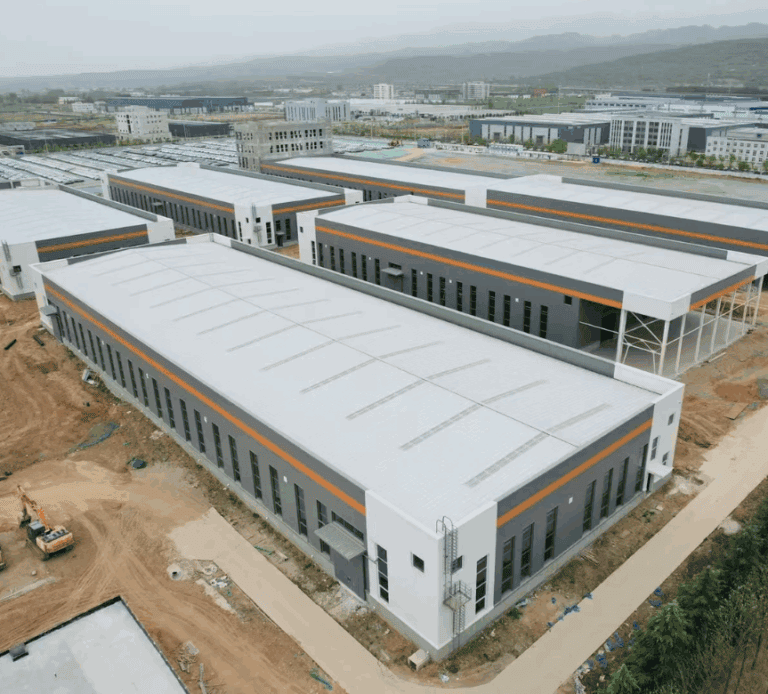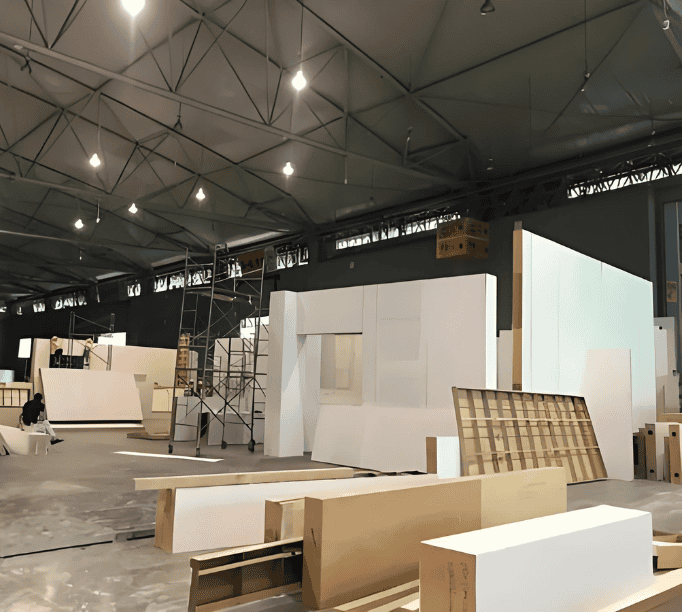Quizás hayas oído hablar de que las casas modulares son más rápidas, económicas y eficientes. Pero ¿son realmente tan buenas como parecen? ¿O tienen desventajas de las que nadie habla?
Si está considerando construir una casa, probablemente esté sopesando cuidadosamente sus opciones. No se trata solo de materiales y plazos. Se trata de si la construcción modular se adapta a su estilo de vida, su presupuesto y sus planes a largo plazo.
En esta guía, analizaremos las ventajas y desventajas de las casas modulares: qué funciona, qué hay que tener en cuenta y qué hay que considerar antes de tomar una decisión. Sin exageraciones ni exageraciones, solo lo que realmente necesita saber.
Qué esperar en este blog:
¿Qué es exactamente una casa modular?
Una casa modular es un tipo de construcción que se construye en secciones, o "módulos", en una fábrica. Estos módulos se transportan a la obra y se ensamblan sobre una base permanente, igual que una casa tradicional.
A diferencia de las casas móviles o casas prefabricadasLas casas modulares cumplen con los mismos códigos de construcción locales que las casas construidas in situ. Esto significa Están legalmente reconocidas como viviendas permanentes y pueden calificar para hipotecas estándar en la mayoría de las regiones..
También es posible que escuches términos como "prefabricado" o "prefabricado". Las casas modulares son un tipo de prefabricadas, pero no todas son modulares. La diferencia clave es qué parte de la casa se construye con antelación y si se asienta sobre una base permanente.
En resumen: una casa modular no es un remolque ni una estructura temporal. Es una casa real, solo que construida de forma más inteligente, rápida y controlada.
¿Cuáles son las principales ventajas de las casas modulares?
Cuando la gente oye hablar por primera vez de casas modulares, suele preguntarse si sus beneficios son reales o solo marketing. Lo cierto es que muchos de los aspectos más frustrantes de la construcción de viviendas son precisamente donde la construcción modular destaca.
Mudanza más rápida, menos espera
Si alguna vez ha lidiado con retrasos en la construcción, sabe lo frustrante que puede ser, especialmente cuando está contando los días para mudarse. Las casas modulares se construyen en una fábrica mientras se prepara el terreno. Estos dos pasos ocurren al mismo tiempo, lo que puede ahorrar semanas o incluso meses de su cronograma total. Muchos propietarios se mudan 30–50% más rápido que con las construcciones tradicionales.

Más control sobre su presupuesto
Los costos inesperados son uno de los mayores temores al construir una casa. Con la construcción modular, gran parte del costo se fija al principio del proceso. Dado que la mayor parte del trabajo se realiza en interiores, no paga de más por retrasos por el clima, modificaciones o problemas de mano de obra. Esto significa menos sorpresas y menos dolores de cabeza financieros.
Calidad confiable de principio a fin
En una obra tradicional, la calidad puede variar de un día para otro. El clima, los horarios de los subcontratistas y los plazos ajustados afectan el resultado. En una fábrica modular, cada sección de su casa se construye bajo estrictos controles, utilizando los mismos equipos y herramientas cualificados. Los materiales están protegidos, las inspecciones son rutinarias y el resultado es una calidad más consistente en todo el proceso.
Más flexibilidad de diseño de la que podría esperar
A algunas personas les preocupa que modular sea sinónimo de algo convencional. En realidad, puedes personalizar una amplia gama de diseños, acabados y características. ¿Quieres una cocina abierta? ¿Un dormitorio adicional? ¿Techos altos y grandes ventanales? La mayoría de los constructores modulares te permiten adaptar el diseño a tu estilo, necesidades y planes futuros.
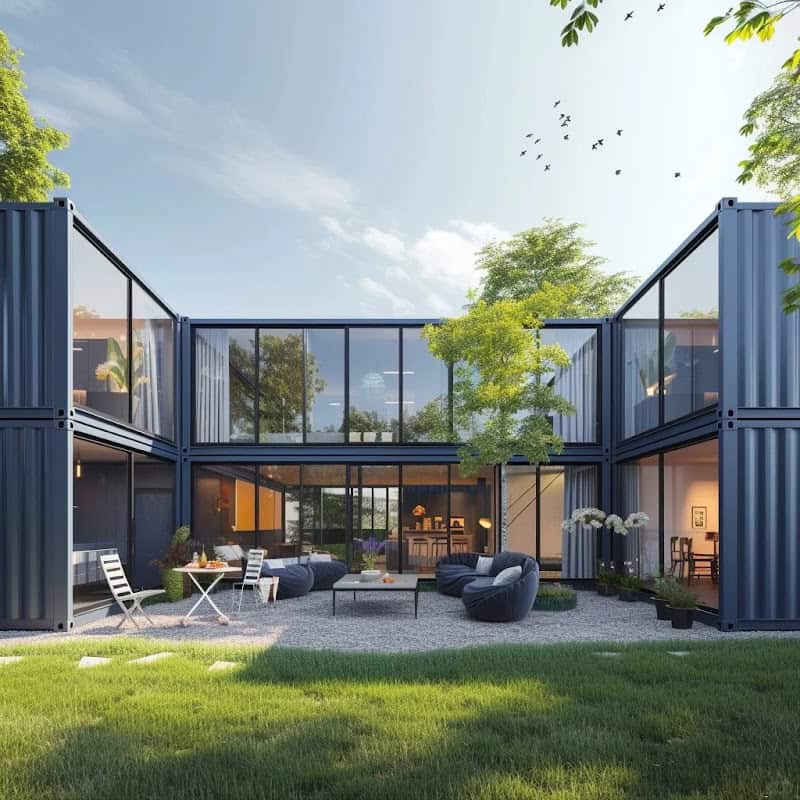
Una opción más inteligente para la sostenibilidad
Las construcciones tradicionales pueden generar grandes desperdicios: materiales de descarte, emisiones del transporte y pérdida de energía. Las casas modulares son más eficientes por diseño. Las fábricas utilizan los materiales con mayor precisión, reciclan los recortes y generan menos residuos. Muchas casas modulares también incluyen mejor aislamiento y opciones compatibles con energía solar, lo que ayuda a ahorrar en las facturas de energía a largo plazo.
Dependiendo de sus prioridades, otras ventajas potenciales incluyen:
- Mejor eficiencia energética
- Menos residuos de construcción
- Expansión futura más fácil
- Menos interrupciones a los vecinos durante la construcción
- Mayor resistencia estructural debido a los requisitos de transporte
- Control de calidad más sencillo con inspecciones de fábrica paso a paso
Desventajas de las casas modulares que debes conocer
Ningún método de construcción es perfecto, incluida la construcción modular. Pero las desventajas no siempre son un factor decisivo. En muchos casos, son simplemente factores que hay que tener en cuenta. Analicemos con más detalle las preocupaciones más comunes.
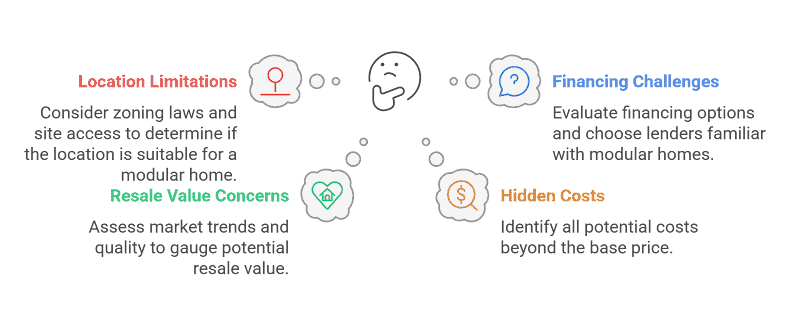
¿Se puede construir una casa modular en cualquier lugar?
No siempre. Las leyes de zonificación, los códigos de construcción y el acceso al terreno pueden limitar los lugares donde se permiten o son prácticos las casas modulares. Por ejemplo, las laderas empinadas, los terrenos urbanos estrechos o las zonas con mal acceso por carretera, como ciertas zonas rurales de Colorado o las regiones montañosas de Oregón, pueden presentar desafíos.
Dicho esto, la mayoría de las zonas que permiten la construcción tradicional también permiten la modular, especialmente si el constructor tiene licencia local. Si no está seguro sobre su terreno, lo mejor es consultar con la oficina de planificación local o con un constructor modular desde el principio.
¿Es más difícil conseguir financiación?
A veces. Aunque muchos prestamistas tratan las casas modulares como viviendas estándar, el proceso de financiación puede ser ligeramente diferente. Es posible que primero necesite un préstamo para la construcción, que se convierte en una hipoteca una vez terminada la vivienda.
Si trabaja con un prestamista que nunca ha trabajado con módulos, la situación puede resultar confusa. Por eso es útil trabajar con bancos o cooperativas de crédito que ya entiendan el proceso. Muchos constructores pueden ponerlo en contacto con socios financieros especializados en este sector.
¿Afectará mi valor de reventa?
Esta es una preocupación común, y es comprensible. En algunos mercados, las casas modulares aún enfrentan un estigma anticuado, especialmente entre compradores mayores o agentes que no las conocen. Esto es más probable en zonas donde las casas modulares son poco comunes o aún se confunden con las casas prefabricadas.
Sin embargo, el mercado está cambiando. En lugares como el Medio Oeste y el Noroeste del Pacífico, las casas modulares son cada vez más populares y los valores de reventa se mantienen estables. La clave está en la calidad: una casa modular bien mantenida y construida según las normas conserva su valor, como cualquier otra casa.
¿Existen costos adicionales u ocultos?
Puede haberlos, especialmente si asume que el precio base lo cubre todo. La preparación del terreno, los cimientos, las conexiones de servicios públicos, los permisos y el transporte pueden sumarse. Por ejemplo, si su terreno está en un terreno inclinado o lejos de las líneas de servicios públicos, es probable que esos costos sean más altos.
Eso no significa que la construcción modular sea más cara. Simplemente significa que hay que mirar más allá del precio de etiqueta. Un buen constructor te dará un desglose completo del costo por adelantado, para que no haya sorpresas.
¿Qué otros factores debes considerar antes de decidir?
Ya has visto las ventajas. Has analizado los desafíos. Ahora viene la verdadera pregunta: ¿es el diseño modular la opción adecuada para ti? Aquí tienes algunos factores personales que debes considerar antes de tomar una decisión.
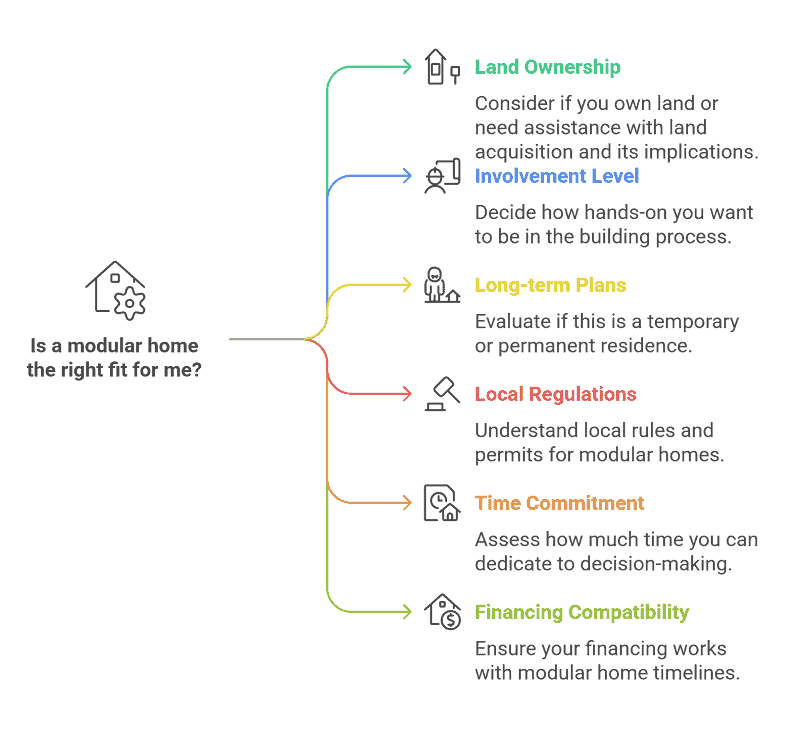
¿Ya posee un terreno o necesita ayuda para encontrarlo?
Las casas modulares necesitan terreno, como cualquier otra casa. Si ya tienes un terreno, ¡genial! Tienes ventaja. Pero si no, tendrás que considerar el costo del terreno, la normativa urbanística, el acceso para camiones de reparto y la proximidad a los servicios públicos. Algunos constructores pueden ayudarte con la selección del terreno, mientras que otros se centran solo en la construcción. Asegúrate de saber qué incluye.
¿Qué tan involucrado quieres estar en el proceso?
A algunos compradores les encanta involucrarse personalmente. Otros prefieren una solución integral. Las casas modulares ofrecen ambas opciones, pero debe decidir con anticipación. ¿Se encargará usted de los permisos, la preparación del terreno y las conexiones de servicios públicos? ¿O prefiere que el constructor lo coordine todo? Cuanto más involucrado esté, más decisiones tendrá que tomar sobre la marcha.
¿Es este su hogar para siempre o un paso flexible?
Piensa en cuánto tiempo planeas vivir en esta casa. La construcción modular puede ser una excelente opción para una primera vivienda, una segunda propiedad o para reducir el tamaño de tu casa después de la jubilación. Pero también funciona bien para vivir a largo plazo, especialmente con espacio para expandirse más adelante. Si la flexibilidad es importante para ti, ya sea en cuanto a costo, tiempo o distribución, la construcción modular te da espacio para adaptarte a los cambios de tu vida.
¿Está familiarizado con las normas y permisos locales?
Las casas modulares cumplen con los códigos de construcción locales, pero local no siempre significa simple. Algunas zonas tienen normas de zonificación, requisitos de retranqueo o estándares de diseño vecinal más estrictos. Si está construyendo en una nueva región o nunca ha tratado con las oficinas de planificación locales, vale la pena investigar con antelación o trabajar con un constructor que conozca bien la zona.
¿Cuánto tiempo puedes dedicar personalmente?
Incluso si no gestiona la construcción usted mismo, deberá tomar decisiones sobre el diseño, los materiales, los plazos de entrega y las aprobaciones. Si se encuentra en una etapa exigente de su vida, como un cambio de trabajo o el cuidado de familiares, quizás prefiera un constructor que le ofrezca un apoyo más práctico. Cuanto menos tiempo tenga, más importante será la gestión del proyecto.
¿Su financiamiento funcionará con un cronograma modular?
Algunos bancos aún tratan las casas modulares de forma diferente, especialmente en lo que respecta a préstamos para construcción o plazos de entrega. Antes de enamorarse de un plano, asegúrese de que su prestamista apoye la construcción modular y comprenda el proceso. Un buen socio financiero puede ser decisivo para su experiencia.
Reflexiones finales
Elegir cómo construir tu casa nunca es solo una decisión técnica, es personal. Ya has visto lo que las casas modulares pueden ofrecer: velocidad, control, calidad y flexibilidad. También has visto los verdaderos desafíos: dónde puedes construir, cómo funciona la financiación y qué esperar en el proceso.
Pero aquí está el valor más profundo: la construcción modular no solo cambia la forma en que se construyen las casas. Cambia la forma en que experimentas el proceso. Menos esperas. Menos sorpresas. Más claridad. Y en una época en la que construir una casa suele resultar abrumador, esa claridad es poderosa.
Si has leído hasta aquí, no solo sientes curiosidad, sino que te lo tomas en serio. Y es un buen momento. El siguiente paso no es un salto. Es una conversación: con un constructor, un planificador o incluso contigo mismo. La casa ideal no se trata solo de la estructura. Se trata de que se ajuste a tu presupuesto, a tu cronograma y a tu estilo de vida.
No tienes que decidir hoy. Pero ya sabes qué preguntar. Y eso significa que ya tienes ventaja.
¿Está listo para explorar cómo podría lucir una casa modular para usted?
No tienes que resolverlo todo solo. Si tienes preguntas sobre el costo, el diseño, el terreno o incluso por dónde empezar, estamos aquí para guiarte.
En Acero PRO PEBHacemos más que construir estructuras. Te ayudamos a crear un plan claro y realista, desde el primer boceto hasta la última pieza.
- Diseños personalizados gratuitos tanto en 2D como en 3D
- Transparencia total en la producción: desde el acero en bruto hasta el marco final
- Soporte de instalación remota o in situ, según sus necesidades
- Un equipo que habla su idioma, no solo jerga de ingeniería.
Ya sea que aún estés comparando opciones o estés listo para avanzar, hablemos. Una conversación rápida puede resolver más que horas de investigación en línea.
→ Contacta ahoraCuéntanos dónde estás y adónde quieres ir. Te ayudaremos a construir el camino.
